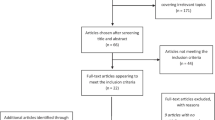Abstract
Driving is a complex task that requires integration of various skills that may be impaired in patients with brain tumours. Determining fitness to drive is a responsibility of all physicians in Canada; however, it is an inconsistent practice based on few objective guidelines. The primary purpose of the study is to determine the consistency of driving recommendations amongst health care professionals in Ontario. Secondary aims include evaluation of physician awareness of driving regulations and determination of whether physicians would benefit from more specific driving guidelines. An 18-item questionnaire was sent to 126 health care professionals who take care of patients with brain tumours in Ontario. Seventy-five health care professionals responded to the survey. Less than 10% said they could reliably determine fitness to drive and almost an equal percentage of respondents indicated that determining fitness to drive should be a shared responsibility. The factors deemed important in determining driving safety were highly variable; 70% indicated that cognitive and emotional deficits were important. Over a third of respondents never heard of the CMA guidelines and of those who were familiar with it, 12.5% felt they were sufficient to inform clinical decisions. 90% of respondents wanted more specific and detailed driving guidelines for patients with brain tumours. The current guidelines for physicians are not specific enough for physicians to confidently determine fitness to drive in this population. These findings suggest the need for more detailed guidelines for driving safety that are based on empirical studies on driving habits and performance in patients with a variety of brain tumours.


Similar content being viewed by others
References
North American Brain Tumour Coalition: know the facts (2009) Available but inactive
Central Brain Tumor Registry of the United States (2016) 2016 CBTRUS Fact Sheet. http://www.cbtrus.org/factsheet/factsheet.html
Canadian Medical Association (CMA) (2006) Determining Medical Fitness to Operate Motor Vehicles. CMA Driver’s Guide. 7th edn. Ottawa
American Medical Association and the National Highway Traffic Safety Administration (2010) Physician’s guide to assessing and counselling older drivers 2nd edn.
Driver and Vehicle Licensing Agency (2017) Assessing fitness to drive—a guide for medical professionals. https://www.gov.uk/current-medical-guidelines-dvla-guidance-for-profes- sionals-conditions-s-to-u
Austroads and the National Transport Commission (2016) Assessing fitness to drive for commercial and private vehicle drivers: medical standards for licensing and clinical management guidelines. Sydney
Government of Ontario (1990) Highway Traffic Act, R.S.O. 1990, c.H.8, s.203(1)
Louie AV, D’Souza DP, Palma DA et al (2012) Fitness to drive in patients with brain tumours: the influence of mandatory reporting legislation on radiation oncologists in Canada. Curr Oncol 19:117–122
Louie AV, Chan E, Hanna M et al (2013) Assessing fitness to drive in brain tumour patients: a grey matter of law, ethics and medicine. Curr Oncol 20:90–96
Chan E, Louie AV, Hanna M et al (2013) Multisciplinary assessment of fitness to drive in brain tumour patients in southwestern Ontario: a grey matter. Curr Oncol 20:4–12
Thomas S, Mehta MP, Kuo JS et al (2011) Current practices of driving restriction implementation for patients with brain tumours. J Neurooncol 103:641–647
Black L (2008) Physicians’ legal responsibility to report impaired drivers. Virtual Mentor 10(6):393–396
Chin YS, Jayamohan J, Clouston P et al (2004) Driving and patients with brain tumours: a postal survey of neurosurgeons, neurologists and radiation oncologists. J Clin Neurosci 11(5):471–474
McDonald KL (2011) Brain tumours and driving. J Neurooncol 104:399–400
Cancer Research UK Brain tumours and driving. https://www.gov.uk/government/uploads/system/uploads/attachment_data/file/526635/assessing-fitness-to-drive-a-guide-for-medical-professionals.pdf
Yuen HK, Sharma AK, Logan WC et al (2008) Radiation dose, driving performance, and cognitive function in patients with head and neck cancer. Radiother Oncol 87:304–307
Yuen HK, Gillespie MB, Barkley RA et al (2007) Driving performance in patients with cancer in the head and neck region: a pilot study. Arch Otalaryngol Head Neck Surg 133:904–909
Yuen HK, Gillespie MB, Day TA et al (2007) Driving behaviours in patients with head and neck cancer during and after cancer treatment: a preliminary report. Head Neck 29:675–681
Weir N, Fischer A, Good P (2017) Assessing the practice of palliative care doctors: what driving advice do they give patients with advanced disease? Intern Med J 47:1161–1165
Strand MC, Fjeld B, Arnestad M, Morland J (2013) Can patients receiving opioid maintenance therapy safely drive? A systematic review of epidemiological and experimental studies on driving ability with a focus on concomitant methadone or buprenorphine administration. Traffic Inj Prev 14:26–38
Monarrez-Espino J, Laflamme L, Rausch C et al (2016) New opioid analgesic use and the risk of injurious single-vehicle crashes in drivers aged 50–80 years: a population-based matched case-control study. Age Ageing 45:628–634
Verster JC, Veldhuijzen DS, Volkerts ER (2006) Effects of an opioid (oxycodone/paracetamol) and an NSAID (bromfenac) on driving ability, memory functioning, psychomotor performance, pupil size, and mood. Clin J Pain 22:499–504
Triebel KL, Martin RC, Nabors LB, Marson DC (2009) Medical decision-making capacity in patients with malignant glioma. Neurology 73:2086–2092
Funding
St. Michael’s Brain Tumour Research Fund and the Comprehensive Research Experience for Medical Students (CREMS).
Author information
Authors and Affiliations
Corresponding author
Ethics declarations
Conflict of interest
None of the authors report any conflicts of interest.
Ethical approval
This study was approved by the local institutional review board.
Informed consent
All participants provided written informed consent.
Electronic supplementary material
Below is the link to the electronic supplementary material.
Rights and permissions
About this article
Cite this article
Mansur, A., Desimone, A., Vaughan, S. et al. To drive or not to drive, that is still the question: current challenges in driving recommendations for patients with brain tumours. J Neurooncol 137, 379–385 (2018). https://doi.org/10.1007/s11060-017-2727-y
Received:
Accepted:
Published:
Issue Date:
DOI: https://doi.org/10.1007/s11060-017-2727-y




